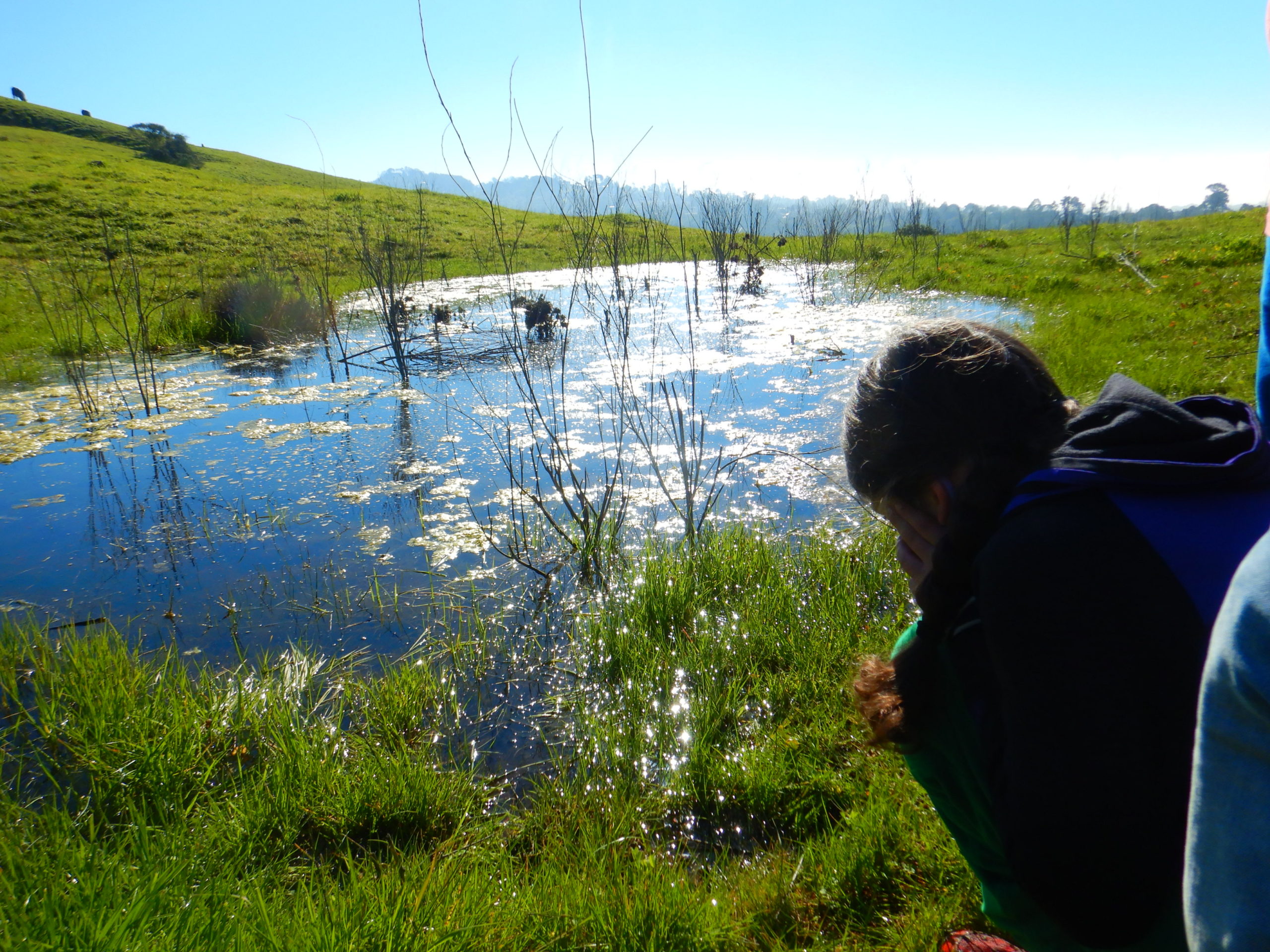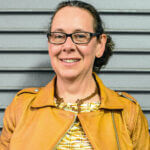“Can we go up to the vernal pools tomorrow?”
My query was met with quizzical looks. This year’s group of students at Outside School, in Richmond, CA, prefers the comfort of the park at hand and flush toilets. This is despite a solid history of these walks up into the hills delivering consistently on being The Best Day Ever. “They’re going to be dried up before we know it.” More looks. “If we find frogs again, I’ll teach you how to handle them.” Skepticism gave way to excitement and our plan was on.

I packed insect nets and a collapsible terrarium the next morning. I was met with another query, “Can we bring the dissecting kit in case we find another dead animal?” “Absolutely!” We ate snack within a Coast Live Oak before heading off with another enticement, a shortcut we discovered last time meant the walk this time wouldn’t be nearly as long. Before we knew it we’d arrived and found the two vernal pools had shrunk considerably. In looking for frogs, we found dozens of egg sacs. We were seeking new life, and there it was: frogs in brown, green, and a combination of both colors, microscopic life swimming everywhere, and finally the tadpoles, quickly darting between resting places. There must have been thousands! Further investigation led to the discovery of a live newt along with the body of Hammy Newtson, the dead newt we found last time. Its body had turned white and was resting in the sediment. Since the cows didn’t come over this time, we could look around a little more. We found the low lying areas where water was still seeping as myriad birds flew about: Western Bluebirds, Red Winged Blackbirds, an American Kestrel, and our beloved Turkey Vultures. Just before lunchtime I discovered a Garter Snake, netted it, and got it peacefully transferred into the terrarium so we could enjoy lunch in its company before setting it free again. I was the only one brave enough to handle the animals, but I shared what I was doing, all the whys and hows. Another Best Day Ever, and a natural way to learn about our watershed.
Teaching is my second career, after I joined a bureaucratic environment right out of college. This was not for me, and as I explored this life change, I took child development classes in addition to learning directly from a science teacher, one of my life’s mentors. Teaching preschool with high-needs children, large numbers of them per classroom, and few teachers taught me a lot! I jumped at the chance to become the school’s garden teacher. I was developing my own curriculum, learning about plants, musing about animal visitors, and being far less sick due to being out in the open air. I realized others may want to take a similar path, but perhaps lacked resources or encouragement, so I started my website, www.teachoutside.org.
Eventually, I began Outside School as an after school program at local public elementary schools. Children clambered to come with me! I saw their desire to be outdoors, freed of their indoor restraints, and experienced the wonder of their school’s natural spaces. They loved eating fennel and fava beans, getting to be loud, and searching for fish and butterflies. They regularly opened “stores” of found objects (with money usually being special leaves), “cooked” tiny burritos of edible fruits and leaves, and made up all sorts of fast and daring games. They got to climb trees!
Throughout these times I was noticing what wasn’t working in these teaching environments and decided to start Outside School as an independent program for school-age children. It focuses on all the things that elementary, middle, and high schools don’t:
- 100% outdoor classroom, where learning takes place within the environment
- Tiny class sizes (no more than eight children) over the course of an entire school year so everyone gets to build relationships with each other and the land
- Mixed ages so children learn from one another and behaviors are naturally tempered
- No planned curriculum so we can explore individual and group interests
- Minimal use of equipment so there is less waste and the focus is on ourselves and the environment
- Democratic ideals, so everyone has a say
My role is that of structure-provider (i.e. schedule-keeping), interpreter (of environment or feelings), and “pusher” (the one who recognizes what the next steps in a child’s or group’s development are and helps them in that direction). We run Tuesdays through Thursdays during the school year, from 9:00-3:00. As such, this is for children who are hybrid or flexischooled (attending their classrooms on Mondays and Fridays), in independent school, or are homeschooled. This ensures they’re following state standards but allows families the freedom and flexibility to do what works best for them.
I’m in Richmond, California, a city of tremendous diversity and need. As a small, woman-owned business, tuition is my way to receive income. I set it to be as low as possible in an attempt to be able to enroll as many local children as possible, but I’ve struggled to find ways to make Outside School an equitable program. Many families I’ve served have been from multi-ethnic backgrounds, single parents (by choice, divorce, or death), various religious backgrounds, have parents or children of various genders, including those who have transitioned, are thinking about it, or are in the process of transitioning, have developmental delays, immigrated, do not know English or are multilingual, or have adopted children, some of whom were born drug-addicted or with other traumas. I would like to add even more families, with more diverse needs. When a family enrolls their children with me, I am there to support them as well as their child. I want my student body to represent the whole of our rich community.
I envision public schools funding this program for a set number of their students, whether families apply or are selected by their teachers, counselors, or principals. They can attend their usual classes or independent studies on Mondays and Fridays, while receiving the special attention and goodness that comes from being out in nature the rest of the week. I want this to be a springboard for other programs. I also want to work on an online teacher training program, as many from around the world have asked me.
Because my approach is developmental, with the head (academics), heart (social and emotional), and hands (physical) at the fore, we are truly teaching the whole child. Examples like the herping trip described above incorporate all these aspects, making it a richer experience than if we studied reptiles and amphibians at my discretion, from within a walled room. Traditional schools make motor development, art, science, language, math, and the humanities separate topics. At Outside School, everything we do combines these elements. Focusing on the whole person- their strengths and challenges within themselves, their families, their communities, and their landscape- is the future of education. When I hear Steller’s Jays calling on cool mornings, it brings me back to my childhood camping trips. I hope that later in my students’ lives, hearing these same calls becomes their memory of the sound of school.


